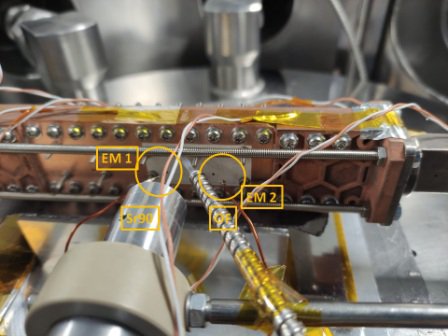
A researcher at the Universitat Politècnica de València has used additive manufacturing technology for the development of qualified RF communication filters for satellites.
The researcher, Carmen Bachiller, worked with AIJU Technological Center, the Val Space Consortium, and the European Space Agency – with funding coming from Agencia Valenciana de la Innovación – to develop and quality the RF communication filters in both waveguide and surface-mounted technologies (SMT).
Traditionally, these are parts that would normally be manufactured with metal milling techniques. With additive manufacturing, Bachiller identified an opportunity to make significant enhancements to RF communication filters, with benefits achieved across cost, weight, and performance.
SOLUTION
Bachiller printed the devices using vat photopolymerisation technology with a glass-filled photosensitive resin Rigid 10k from Formlabs. CST Studio SUITE CAD was used for the electromagnetic design of the communication filters, and post-print, the parts were sanded before being put through two copper metallisation processes (autocatalytic metallisation and electroplating).
The printed RF devices were metallised in order to provide surface conductivity. Communication filters require conductive properties, but only at surface level. The metallisation of the polymer parts was thus considered a good way of providing the required conductivity, but with lighter and less expensive devices.
The additively manufactured RF communication devices:
- Achieved a 4x weight saving
- Generated a 2.5x cost saving
- Used nearly 75% material
- And were produced in the same timeframe as conventional devices
IMPACT
The manufacture of the RF communication filters, inclusive of the post-processing steps, proved not to save much time compared to traditional metal milling. But the use of a manufacturing technique did provide value elsewhere.
According to the operative filters developed in this project, manufacturing costs were 2.5 times cheaper using additive manufacturing and metallisation. With additive manufacturing, the RF communication filters were able to be manufacturer in one piece, versus an assembly of multiple parts previously. The weight was also reduced by four times, while Bachiller also reported s higher dimensional accuracy. Temperature, mechanical stress and power handling tests were all passed successfully, enabling the devices to be used in space communications systems. Meanwhile, the smaller size of the communication devices allow the use of nano and pico satellites, ensuring communication services could be provided in remote areas.
Another of the key benefits was the environmental impact. Previously, one unit of the devices would have required 290.28g of metal, but the additively manufactured parts only used 71.69g of material – 1% of which is metal, and the rest polymer. Additionally, electroless metallisation doesn’t use hexavalent chromium.




